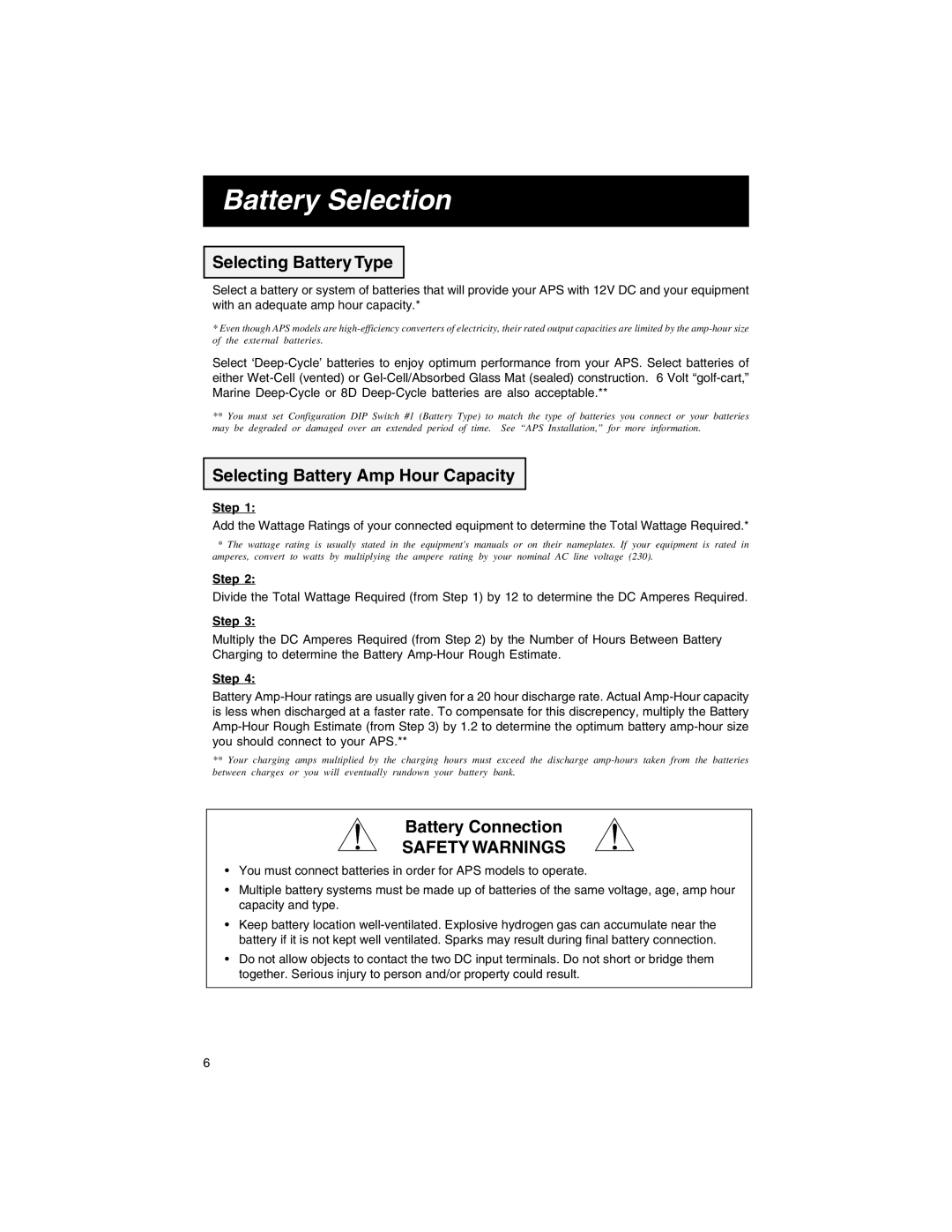
Battery Selection
Selecting Battery Type
Select a battery or system of batteries that will provide your APS with 12V DC and your equipment with an adequate amp hour capacity.*
*Even though APS models are
Select
**You must set Configuration DIP Switch #1 (Battery Type) to match the type of batteries you connect or your batteries may be degraded or damaged over an extended period of time. See “APS Installation,” for more information.
Selecting Battery Amp Hour Capacity
Step 1:
Add the Wattage Ratings of your connected equipment to determine the Total Wattage Required.*
*The wattage rating is usually stated in the equipment's manuals or on their nameplates. If your equipment is rated in amperes, convert to watts by multiplying the ampere rating by your nominal AC line voltage (230).
Step 2:
Divide the Total Wattage Required (from Step 1) by 12 to determine the DC Amperes Required.
Step 3:
Multiply the DC Amperes Required (from Step 2) by the Number of Hours Between Battery Charging to determine the Battery
Step 4:
Battery
**Your charging amps multiplied by the charging hours must exceed the discharge
Battery Connection
SAFETY WARNINGS
•You must connect batteries in order for APS models to operate.
•Multiple battery systems must be made up of batteries of the same voltage, age, amp hour capacity and type.
•Keep battery location
•Do not allow objects to contact the two DC input terminals. Do not short or bridge them together. Serious injury to person and/or property could result.
6
